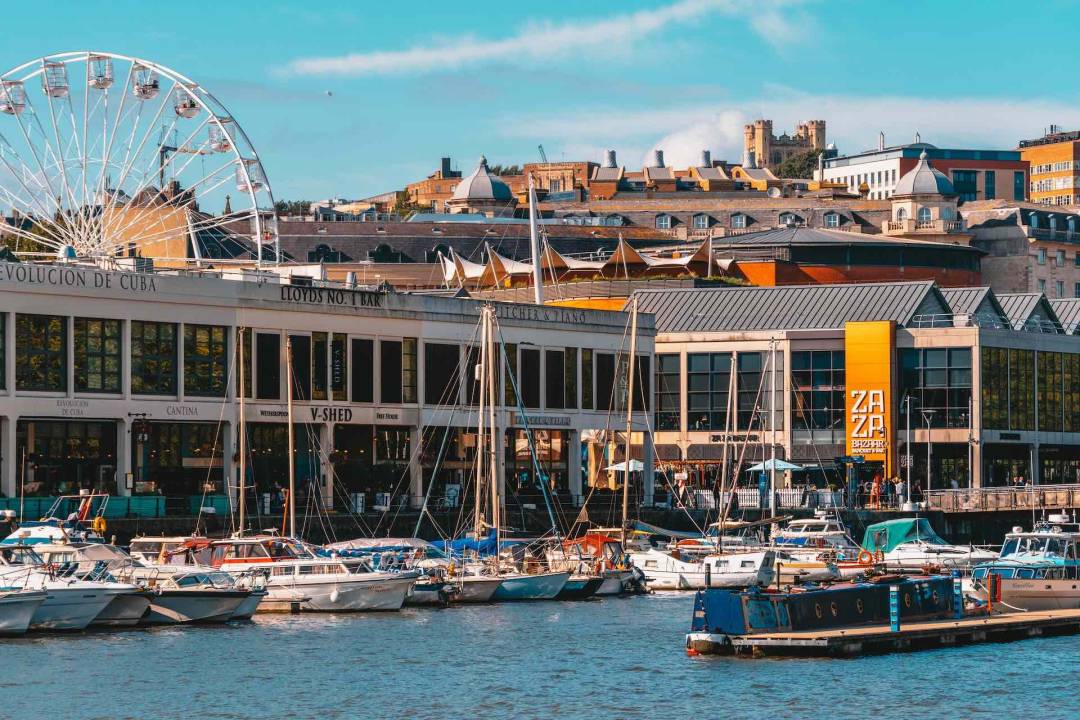Pirates and Bridges: Exploring Bristol's Fascinating History
Explore Bristol's weird and wonderful history in our guide about this vibrant city
Bristol, in southwest England, is known for its vibrant culture, stunning landmarks, and rich history.
From its maritime past to its contemporary art scene, Bristol offers a wealth of attractions.
What most people don't know, is how weird and wonderful the history of Bristol truly is. Whether you're a history buff or just curious about this fascinating city, read on to discover Bristol's unique story.
Read article

Another must-visit attraction is the Bristol Zoo Gardens, the fifth oldest zoo in the world (estalbished. in 1836). It is home to over 400 species of animals, including endangered gorillas, Asiatic lions, and red pandas. The zoo is also heavily involved in conservation work, with many of its animals involved in breeding programs to help save their species.
Here are some interesting facts about the Bristol Zoo History:
Read article

Bristol's contributions to knowledge aren't limited to science and culture. The city is also home to one of the UK's most prestigious universities - the University of Bristol.
Founded in 1876, the university has a long and storied history. Here are some notable moments in its development:
From its maritime past to its contemporary art scene, Bristol offers a wealth of attractions.
What most people don't know, is how weird and wonderful the history of Bristol truly is. Whether you're a history buff or just curious about this fascinating city, read on to discover Bristol's unique story.
Find Bristol Parking
Browse thousands of sparking spaces to rent
Find Bristol ParkingA Quick Summary Bristol's History
Bristol has a rich and intriguing history that spans back over a thousand years. Since its early days as a thriving port, Bristol has always been a hub of industry, culture, and innovation. Here are some fascinating facts about Bristol's history:- Bristol’s name is likely to be a direct translation from the archaic Welsh phrase, “fort on the chasm.” In old English, this ended up being translated to “Brycgstow.”
- Bristol was founded in the 11th century and grew rapidly as a port city. It became the second-largest city in England by the 14th century.
- During the 16th century, Bristol was a centre of piracy. Privateers and pirates would operate out of the city and attack Spanish and Portuguese ships in the Atlantic.
- In the 18th century, Bristol was a major centre of the slave trade. Ships carrying enslaved people from West Africa to the Americas would depart from Bristol's harbor.
- In the 19th century, Bristol was transformed by the Industrial Revolution. New factories, mills, and warehouses sprung up along the city's waterways.
- The Clifton Suspension Bridge, one of Bristol's most famous landmarks, was completed in 1864 after being designed by Brunel. It spans the Avon Gorge and is considered a marvel of engineering.
- During World War II, Bristol was heavily bombed by German planes. The city was hit by more than 1,300 air raids and suffered significant damage.
- In the 1960s and 1970s, Bristol was at the forefront of the British music scene. Bands like Massive Attack and Portishead emerging from the city's vibrant music scene.
| 💡Did you know? 36 towns and cities around the world are named after Bristol, 29 of which are in the US. |
Related
Moving to Bristol: A Stashbee Moving Guide

The Bristol Natural History Museum and Bristol Zoo
Bristol is home to several great attractions that allow visitors to explore its rich natural history. The Bristol Museum & Art Gallery is a great place to start, with exhibits covering everything from local archaeology to exotic wildlife. One of its most popular exhibits is the Bristol Boxkite, which was a pioneering biplane built in Bristol in 1910.Another must-visit attraction is the Bristol Zoo Gardens, the fifth oldest zoo in the world (estalbished. in 1836). It is home to over 400 species of animals, including endangered gorillas, Asiatic lions, and red pandas. The zoo is also heavily involved in conservation work, with many of its animals involved in breeding programs to help save their species.
Here are some interesting facts about the Bristol Zoo History:
- The zoo was the first in the world to breed African painted dogs in captivity.
- It is home to the world's largest species of lizard, the Komodo dragon.
- The zoo's seal and sea lion display was the first in the world to use underwater viewing areas.
- The zoo has a successful breeding program for lemurs, one of the most endangered mammals in the world.
- The zoo is heavily involved in conservation work, with a focus on protecting endangered species and their habitats.
| 💡Fun fact Before Britain took up GMT as their standard time, Bristol had its own time zone. It was 10 minutes later than London, which caused lots of scheduling problems! |
Related
Exploring Britain’s Hidden Gem Campervan Destinations

Bristol's Cultural and Scientific Contributions
Bristol is not only known for its history and landmarks but also for its significant contributions to science and culture. Here are some notable ones:- The Bristol Old Vic, one of the oldest continually-operating theaters in the UK, has been producing plays since 1946. The theater has seen famous actors such as Daniel Day-Lewis and Peter O'Toole perform on its stage.
- Bristol has a strong connection to street art, with the famous artist Banksy hailing from the city. His work can be seen in various locations around Bristol. The famous mural of a girl with a balloon is on Park Street.
- Bristol home to the M Shed museum, which tells the story of Bristol's history from prehistoric times to the present day.
- In the field of science, the University of Bristol is a leading institution in the UK. It has made significant contributions to research in various fields, including physics, engineering, and medicine. The university's research has led to the development of groundbreaking technologies such as the world's first fully-functioning quantum computer.
- Bristol is home to the At-Bristol Science Centre, an interactive museum. It aims to make science accessible and engaging for all ages, on everything from pace exploration to the human body.
| 💡Did you know? Bristol was the birthplace of bungee jumping. The first-ever bungee jump was done by Oxford University Dangerous Sports Club off the Clifton Suspension Bridge in 1979. |

Bristol Uni: A History of Learning
Bristol's contributions to knowledge aren't limited to science and culture. The city is also home to one of the UK's most prestigious universities - the University of Bristol.Founded in 1876, the university has a long and storied history. Here are some notable moments in its development:
- In 1909, the University of Bristol moved to its current home in the grand Wills Memorial Building. The building was funded by the Wills family, who made their fortune in tobacco.
- Researchers at Bristol University invented the cavity magnetron, a crucial component of early radar systems. The work was so important that the university's physics department was temporarily relocated to Malvern to keep it safe from bombing.
- In the 1960s, Bristol was at the forefront of computer science research. The university's computer science department developed a pioneering programming language called POP-1, which was widely used in the UK and Europe.
- In recent years, the university has been involved in groundbreaking research in fields such as nanotechnology, robotics, and synthetic biology.
| 💡Fun fact Blackbeard, the world’s most notorious pirate, born Edward Teach (1680–1718), was born in Bristol. |
Find Bristol Parking
Browse thousands of sparking spaces to rent
Find Bristol ParkingAnthony
Written 4th May 2023
